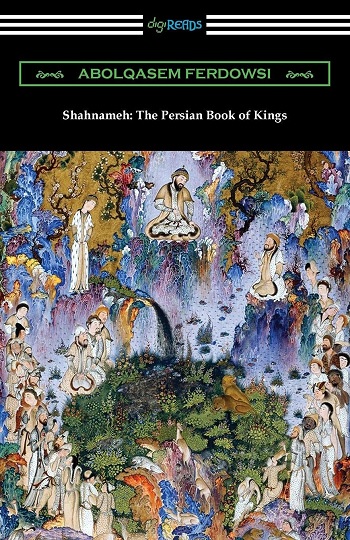Dec 28, 2025
Dec 28, 2025
Epics - 6
 The Persian poet Hakim Abu'l-Qasim Ferdowsi Tusi, known to the world only as Ferdowsi, wrote the monumental epic poem "The Shahnameh," also known as "The Book of Kings," around the 11th century. It contains more than 50,000 verses and is regarded as one of the most significant works of Persian literature.
The Persian poet Hakim Abu'l-Qasim Ferdowsi Tusi, known to the world only as Ferdowsi, wrote the monumental epic poem "The Shahnameh," also known as "The Book of Kings," around the 11th century. It contains more than 50,000 verses and is regarded as one of the most significant works of Persian literature.
Ferdowsi created "The Shahnameh by observing Persian culture, history, and folklore. He devoted almost thirty years of his life to gathering, investigating, and retelling the old-fashioned stories and legends of Iran. The epic covers the legendary starting points of Iran, the rules of different traditions, and the existence of various legends, both incredible and authentic. Not only did Ferdowsi want to entertain his fellow Persians, but he also wanted to instill a sense of national pride and identity in them.
"The Shahnameh" is separated into three primary areas: the age of myth, the age of heroism, and the age of history. It begins with the creation of the world and Kaiumars, the first king, and moves through legendary and semi-historical periods, including the tales of Zal and Rostam, the great hero, and his kin.
The epic relates the existence of verifiable lords, for example, Cyrus the Incomparable and Darius the Incomparable, who assumed huge parts in molding the Persian Domain. Ferdowsi creates a rich narrative embroidery that demonstrates the breadth and depth of Persian culture by skillfully combining historical events, mythical elements, and moral lessons.
"The Shahnameh" investigates different topics, including courage, love, unwaveringness, equity, and the recurrent idea of life. It draws inspiration from Persian mythology and folklore prior to Islam and incorporates elements of Zoroastrianism, the predominant religion of ancient Persia. Ferdowsi's wonderful account features the ethics and indecencies of the two lords and plebeians, uncovering the intricacies of human instinct.
Throughout history, "The Shahnameh" has had a significant impact on Persian culture and identity. It is viewed as an irreplaceable asset and a wellspring of pride for Iranians, representing the strength, versatility, and rich legacy of the Persian public. The epic has impacted various resulting works of Persian writing, workmanship, and music, and its characters and stories have turned into a vital piece of Persian shared awareness.
Here are a few verses from the above epics:
Verse 1:
In the realm of "The Shahnameh," ancient myths come alive,
As fierce warriors ride into battle, their spirits strive.
Behold Rostam, the legendary hero, strong and bold.
With a heart ablaze and a destiny to unfold.
Verse 2:
Within "The Shahnameh," kings and queens hold their sway,
From Kaiumars, the first ruler, to Zahhak, evil's foul display
Sohrab and Rakhsh, a bond of loyalty and might,
Father and son, their destinies tragically intertwine.
Verse 3:
With heartfelt words, Ferdowsi's quill weaves a tapestry.
Of love and loss, valor and honor, for all to see.
"The Shahnameh," a treasure trove of Persian lore,
A testament to the land's rich heritage and more.
Ferdowsi's epic masterpiece, "The Shahnameh," immortalizes Iran's cultural heritage. It demonstrates Ferdowsi's dedication to preserving and celebrating Persian mythology and history. Through its enamoring stories, the poem has formed the social character of Iran, filling in as a wellspring of motivation and public pride. The ageless subjects and clear characters of "The Shahnameh" keep on enamoring perusers and feature the significant lavishness of Persian writing and legacy.
To be Continued
Image courtesy Amazon.com
15-Jul-2023
More by : Dr. Satish Bendigiri